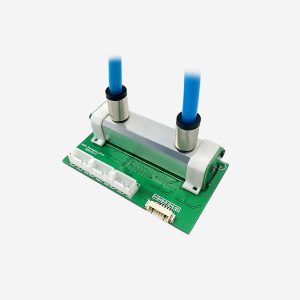Gas sensors play a vital role in various industries and applications, including environmental monitoring, industrial safety, and medical diagnostics. These sensors are designed to detect and measure the presence of specific gases in the surrounding environment. Gas sensors offer several advantages, such as early detection of hazardous gases, real-time monitoring, and improved safety. However, they also have certain limitations that need to be considered. In this article, we will discuss the advantages and disadvantages of gas sensors.

Advantages of Gas Sensors:
Early Detection of Hazardous Gases: One of the significant advantages of gas sensors is their ability to provide early detection of hazardous gases. They can quickly identify the presence of toxic, flammable, or explosive gases in the environment, allowing for timely action and preventing potential accidents or health risks. Early detection is crucial in industries such as chemical plants, oil refineries, and mining operations, where the release of gases can pose serious threats to workers' safety.
Real-Time Monitoring:
Gas sensors enable real-time monitoring of gas concentrations, providing continuous data on the presence and levels of gases in the environment. This real-time information allows for immediate response and intervention when gas levels exceed safety thresholds. By continuously monitoring gas concentrations, industries can ensure compliance with safety regulations and take proactive measures to mitigate risks and prevent incidents.
Improved Safety:
Gas sensors significantly enhance safety in various settings. They can be integrated into alarm systems, safety equipment, and control systems to activate timely alerts, trigger ventilation systems, or shut down processes in case of gas leaks or abnormal gas levels. By detecting and responding to gas hazards promptly, gas sensors help protect human lives, minimize property damage, and reduce the environmental impact of gas releases.
Wide Range of Applications:
Gas sensors find applications in diverse fields, including environmental monitoring, indoor air quality assessment, automotive emissions control, healthcare, and industrial processes. They can be tailored to detect specific gases or a range of gases, making them versatile tools for different industries and settings. Gas sensors are used to monitor air pollution, detect leaks in pipelines, measure gas concentrations in medical devices, and even monitor fermentation processes in the food and beverage industry.
Compact and Portable Designs:
Many gas sensors are designed to be compact and portable, allowing for easy deployment in various locations. Portable gas sensors enable on-site measurements in remote or inaccessible areas, facilitating environmental monitoring, safety inspections, and emergency response operations. The portability of gas sensors makes them valuable tools for field researchers, first responders, and professionals working in hazardous environments.
Disadvantages of Gas Sensors:
Limited Sensitivity and Selectivity: Gas sensors may have limited sensitivity and selectivity when it comes to detecting specific gases. Some sensors may not be able to differentiate between similar gases, leading to false readings or inaccurate measurements. Additionally, certain environmental factors, such as temperature, humidity, and interferences from other gases or chemicals, can affect the performance and reliability of gas sensors.
Calibration and Maintenance:
Gas sensors require regular calibration and maintenance to ensure accurate and reliable measurements. Calibration involves adjusting the sensor's response to match known reference standards. It requires specialized equipment, calibration gases, and trained personnel. Regular maintenance is essential to keep the sensor clean, free from contaminants, and functioning optimally. Failure to calibrate or maintain gas sensors can result in inaccurate readings and compromised safety.
Cost:
Gas sensors can be relatively expensive, especially those designed for specialized applications or capable of detecting multiple gases simultaneously. The cost of gas sensors depends on various factors, including the type of technology used, sensitivity, selectivity, and additional features. The initial investment in gas sensors, as well as ongoing costs associated with calibration, maintenance, and sensor replacement, should be considered when evaluating their feasibility for specific applications.
Response Time:
Gas sensors may have a certain response time, which is the time it takes for the sensor to detect and report changes in gas concentrations. Depending on the sensor technology and design, the response time can vary from a few seconds to several minutes. In some critical applications where rapid gas detection is crucial, the response time of gas sensors may be a limitation that needs to be taken into account.
Environmental Constraints:
Gas sensors' performance can be affected by environmental conditions such as temperature, humidity, and air flow. Extreme temperatures or high humidity levels can influence sensor readings and accuracy. Additionally, certain sensor technologies may require specific environmental conditions to operate optimally. Therefore, it is essential to consider the environmental constraints and limitations of gas sensors when choosing the appropriate type for a particular application.

Conclusion:
Gas sensors offer numerous advantages, including early detection of hazardous gases, real-time monitoring, improved safety, versatility, and portability. They play a vital role in ensuring the safety of workers, protecting the environment, and complying with regulatory standards. However, gas sensors also have limitations, such as limited sensitivity and selectivity, calibration requirements, cost considerations, response time, and susceptibility to environmental constraints. Understanding these advantages and disadvantages is crucial for selecting and utilizing gas sensors effectively in various applications, enabling reliable gas detection, and ensuring a safe working environment.
 : +86 155 8830 2704
: +86 155 8830 2704 : jxdziot@gmail.com
: jxdziot@gmail.com
